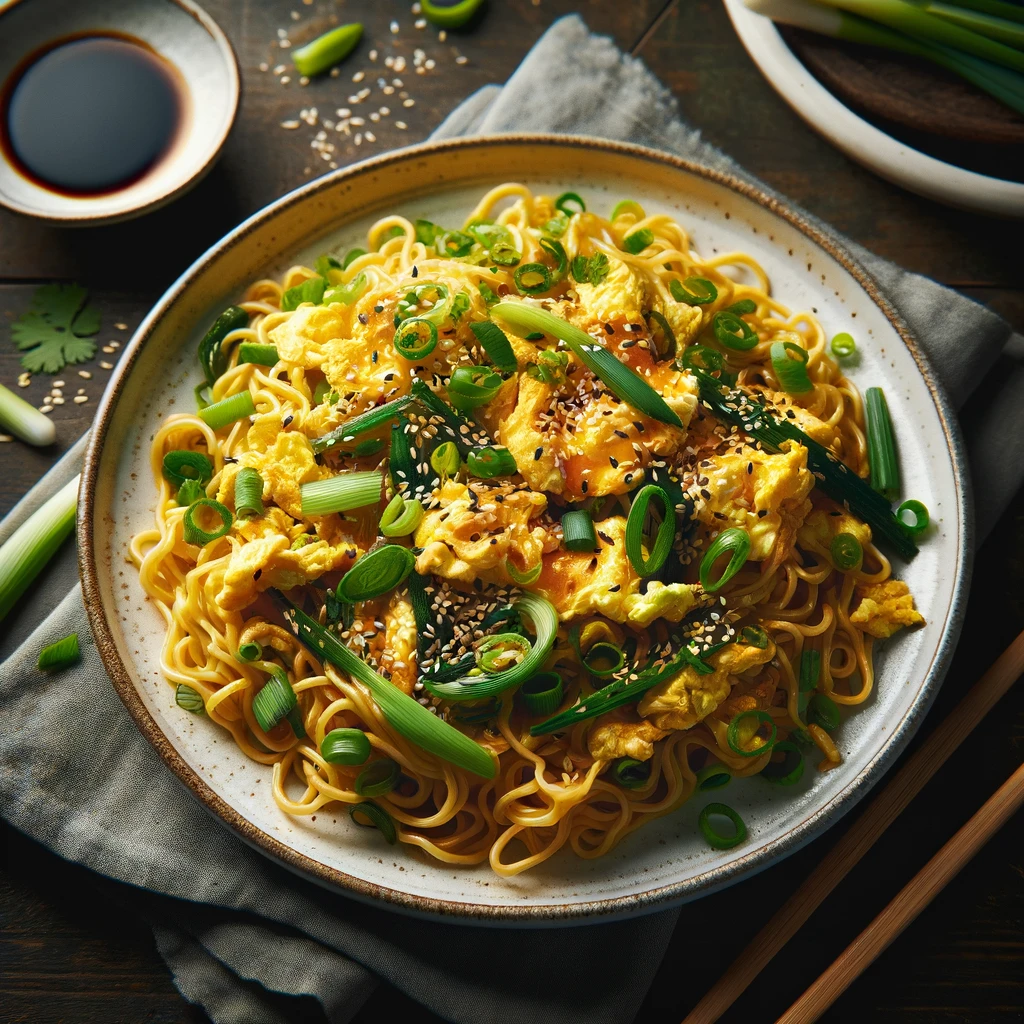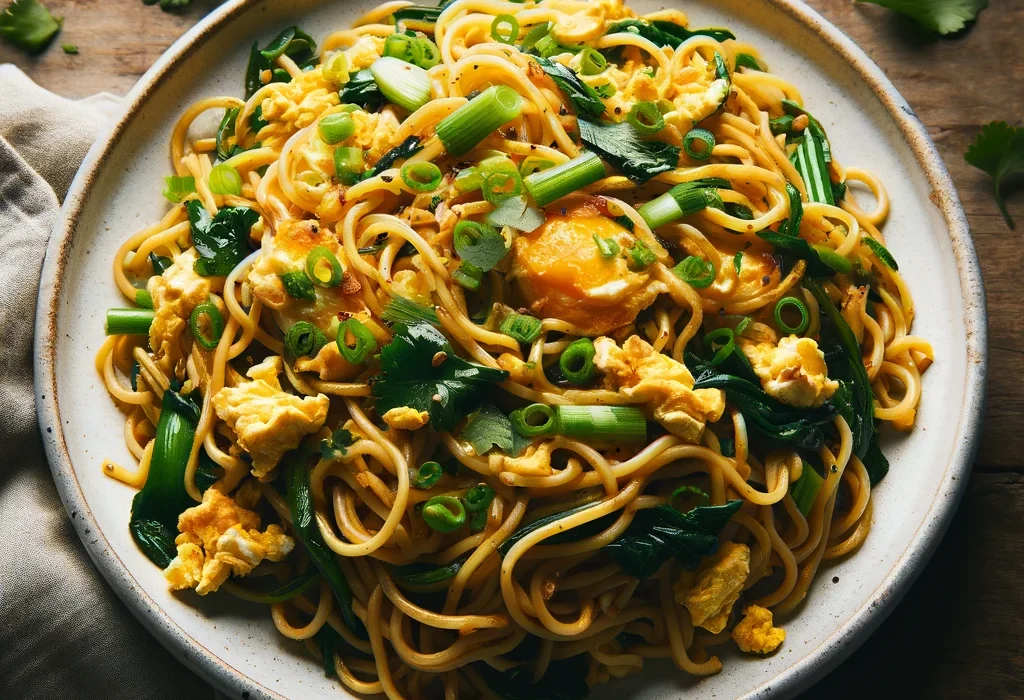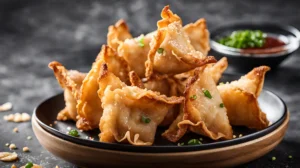Stir-fry noodles with egg is not only a recipe; it is a symphony of flavors and textures. Originality of eggs with feel of comfortable noodles is really a hearty essence. This culinary delight, a staple in Asian cuisine, has crossed oceans to find a special place in kitchens worldwide. Be you the busy professional in search of a quick dinner fix or the home chef eyeing the perfect dish to woo the family, this recipe is your go-to guide towards a meal that promises both taste and nutrition.
Making stir-fry noodles with eggs typically takes about 20 to 30 minutes from start to finish. This includes time for prepping the ingredients (like chopping vegetables and beating the eggs) and the actual cooking time, which is usually quick due to the high heat used in stir-frying. The exact time can vary depending on the specific recipe you’re following and how fast you work in the kitchen. Here’s a rough breakdown:
- Prep time: 10-15 minutes for washing and chopping vegetables, preparing the noodles (if they need to be soaked or boiled ahead of time), and beating the eggs.
- Cooking time: 10-15 minutes for stir-frying the ingredients together on high heat. Cooking times can be shorter or longer depending on the volume of ingredients and your stove’s heat output.
Table of Contents
Understanding the Art of Stir-Fry
The Joy of Stir-Frying: Stir-frying is a cooking technique born out of necessity and innovation. It’s about quick cooking over high heat, where the ingredients get a beautiful sear without losing their crunch and nutritional value.
The Role of Noodles: Noodles, in this context, aren’t just a filler; they are the canvas on which the rest of the ingredients paint their flavors. Choosing the right type of noodle can elevate your dish from good to unforgettable.
Eggs: The Protein Punch: Eggs in stir-fry are not just an add-on. They bring a creamy texture and rich flavor, binding the other ingredients together in perfect harmony.
Stir-Fry Noodles with Egg Recipe
Before diving into the intricacies of cooking, let’s gather what we need. The beauty of this recipe lies in its simplicity and the freedom to improvise with what you have on hand.
Ingredients:
- Noodles of your choice (rice, wheat, or any other)
- 2 large eggs
- A mix of fresh vegetables (bell peppers, carrots, onions, and spring onions)
- Soy sauce for umami depth
- Sesame oil for that nutty aroma
- Garlic and ginger for a flavor kick
- Salt and pepper to taste
Cooking Method:
- Prepping the Noodles: Cook the noodles according to package instructions but keep them slightly underdone. They’ll cook further when stir-fried, ensuring they don’t turn mushy.
- Vegetable Symphony: Quick fry your choice of thinly sliced vegetables in a hot pan with a splash of oil. This step is all about keeping the veggies vibrant and crunchy.
- Egg Magic: Push the veggies to one side of the pan, crack open the eggs on the other, and scramble them gently. When partially cooked, mix with the vegetables.
- Noodle Time: Add the noodles to the pan, pour over the soy sauce, and drizzle sesame oil. Toss everything together until the noodles are well coated and heated through.
- Finishing Touches: Season with salt and pepper. Garnish with chopped spring onions or a sprinkle of sesame seeds for an extra layer of flavor and texture.
The Secret to a Perfect Stir-Fry
- High Heat, Quick Action: The essence of stir-frying lies in its pace. Keep everything moving in the pan to avoid burning.
- Preparation is Key: Have all your ingredients chopped, measured, and ready. In the whirlwind of stir-frying, there’s no time to pause.
- Customization is Welcome: Feel free to add proteins like chicken, beef, or tofu to make the dish more substantial.
- Sauce Creativity: Beyond soy sauce, explore oyster sauce, fish sauce, or a dab of chili paste to dial up the flavor.

Expert Advice
What kind of noodles are best for stir-fry?
Rice noodles, udon, or even spaghetti work well. The choice depends on your texture preference and dietary needs.
Can I make this recipe gluten-free?
Absolutely! Opt for tamari instead of soy sauce and ensure your noodles are gluten-free.
How can I add more protein to this dish?
Besides eggs, consider adding sliced chicken breast, beef strips, or tofu cubes. Cook them before the vegetables and set aside.
Can I use frozen vegetables?
Yes, frozen vegetables are a convenient option. Thaw them before cooking to avoid excess moisture in the pan.
How long does this dish keep?
While best enjoyed fresh, you can store leftovers in the refrigerator for up to two days. Reheat in a pan over medium heat.
Conclusion
Stir-fry noodles with egg is not just a dish; it’s a canvas for creativity. It’s about finding harmony in the chaos of high heat, celebrating the simplicity of ingredients, and embracing the joy of cooking. Whether it’s a busy weeknight or a leisurely weekend, this recipe stands as a testament to the beauty of quick, nutritious, and delicious meals.
Understanding the Concept: Exploring Alternative Methods through YouTube Search
Stir-fry noodles with eggs, a dish that resonates deeply within the heart of Asian cuisine, tells a story that transcends mere ingredients and cooking techniques. This dish, in its simplicity, carries the essence of centuries-old culinary practices, embodying the innovation, adaptation, and cultural significance that have shaped Asian food traditions. Let’s embark on a journey to explore the origins and evolution of homemade stir-fry noodles with eggs, tracing its path from ancient kitchens to its status today as a beloved staple across Asia and beyond.
Origins of Stir-Frying in Asian Cuisine
Stir-frying, a cooking method characterized by quick frying of ingredients in a small amount of very hot oil while stirring briskly, is believed to have originated in China. This technique, efficient in fuel usage and ideal for cooking fresh vegetables and meats quickly to retain their texture and nutrients, soon became a cornerstone of Chinese cuisine. The practice spread across Asia, influencing and being adapted by various culinary traditions.
The Birth of Stir-Fry Noodles
Noodles, a universal element in Asian diets, have a documented history that stretches back over 4,000 years in China. The incorporation of noodles into stir-fry dishes represented a fusion of staple ingredients with innovative cooking techniques. This combination allowed for the creation of a myriad of dishes, each reflecting the unique flavors and ingredients of its region.
Eggs: The Perfect Complement
Eggs, with their high nutritional value and versatility, have always been an integral part of Asian diets. When stir-fried with noodles, they not only add a rich texture and flavor but also enhance the dish’s nutritional profile. The addition of eggs to noodle stir-fries is a testament to the ingenuity of Asian cooks, who expertly balance flavor, texture, and health benefits.
Regional Variations and Influences
As the practice of making stir-fry noodles with eggs spread across Asia, regional variations emerged. From the soy sauce-infused flavors of Chinese chow mein to the spicy kick of Thai pad see ew, and the savory depth of Japanese yakisoba, each region added its signature twist to the dish. These variations not only highlight the adaptability of the basic recipe but also the rich tapestry of Asian culinary traditions.
Homemade Tradition and Its Evolution
Traditionally, stir-fry noodles with eggs were made at home using locally available ingredients, making the dish an accessible option for a nutritious and quick meal. Over time, as Asian cuisine gained global popularity, these homemade dishes began to be featured in restaurant menus worldwide, evolving into gourmet versions that still pay homage to their humble origins.
Cultural Significance
More than just a meal, homemade stir-fry noodles with eggs carry cultural significance, embodying the principles of balance and harmony that are central to Asian philosophies. The dish represents a blend of the five flavors (sweet, sour, bitter, salty, and umami) and incorporates the concept of yin and yang through the combination of various ingredients and textures.
What makes stir-fry noodles with eggs a popular dish in Asian cuisine? Stir-fry noodles with eggs are popular due to their quick preparation time, nutritional value, and the versatility that allows for endless variations based on available ingredients and regional preferences.
How do different Asian countries customize their stir-fry noodles with eggs? Different Asian countries customize their stir-fry noodles with eggs by incorporating local ingredients, spices, and sauces, creating a diverse range of flavors and textures unique to each culinary tradition.
Can stir-fry noodles with eggs be considered a healthy meal? Yes, stir-fry noodles with eggs can be a healthy meal option, as it combines high-quality proteins from eggs with the carbohydrates of noodles and the vitamins and minerals from any added vegetables.
What is the significance of eggs in Asian noodle dishes? Eggs add nutritional value, texture, and flavor to noodle dishes, making them a preferred ingredient that complements the overall balance of the dish in Asian cuisine.
How has the tradition of making homemade stir-fry noodles with eggs evolved over time? The tradition has evolved from a simple, home-cooked meal to a global culinary phenomenon, with variations of the dish being served in restaurants worldwide, yet still retaining its essence and cultural significance.



